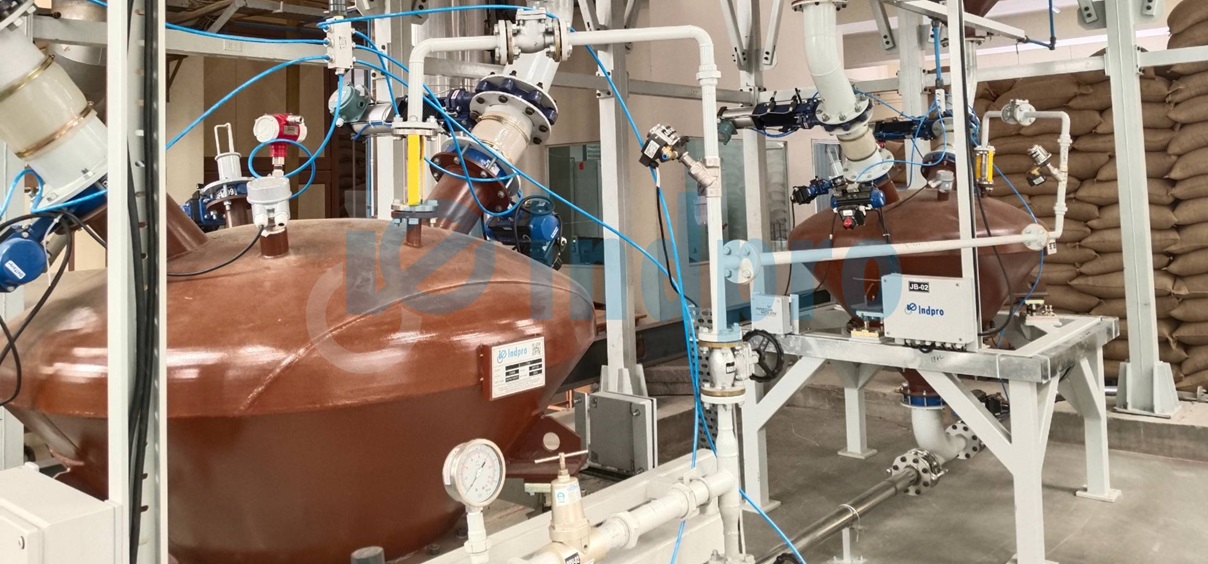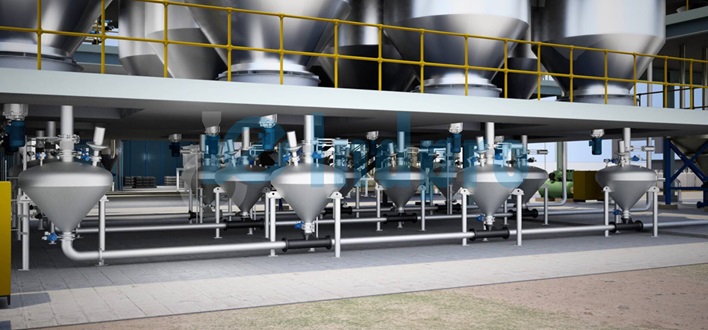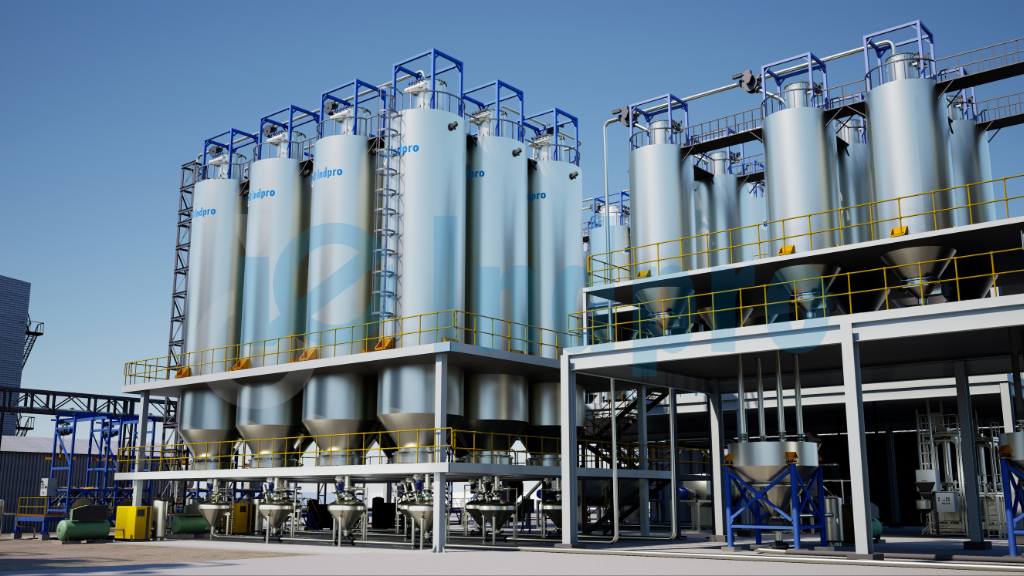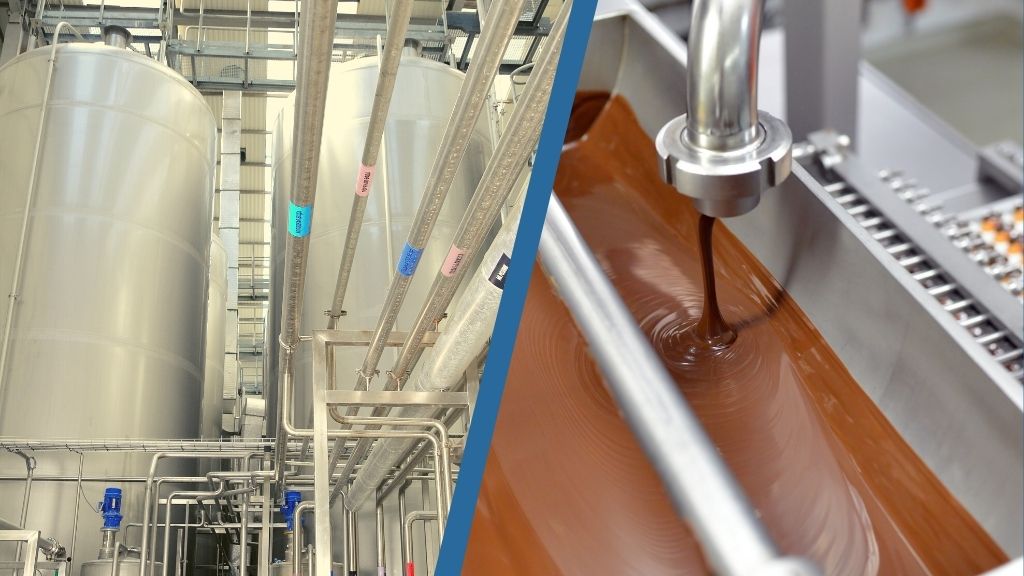Importance of Pneumatic Conveying in the Food & Beverage Industry
Importance of Pneumatic Conveying in the Food & Beverage Industry
The food and beverage industry is one of the most dynamic and fast-paced sectors, always pushing boundaries to deliver top-notch products while maintaining utmost hygiene and safety. In this exciting industry, pneumatic conveying is a real game-changer. Imagine this: materials whooshing through pipes thanks to air pressure – it is not just about speed; it’s about revolutionizing how we work! This technology not only makes our operations super-efficient but also ensures that every step of the way, food safety remains top priority.

What is Pneumatic Conveying?
Pneumatic conveying is the process of moving bulk materials such as powders, grains, granules, and liquids through pipelines by using air pressure. The materials are either conveyed using positive pressure (forcing the materials to move in a direction) or negative pressure (suction), making it a flexible and efficient option for transporting a wide range of food ingredients.

Why Pneumatic Conveying is Crucial for the Food & Beverage Industry
Hygienic and Safe Material Handling:
In the world of food, cleanliness is king! Pneumatic material handling systems are like a secret weapon for hygiene. By limiting the need for hands-on contact with raw materials, they significantly reduce the risk of contamination. This means your food stays safer and tastier from start to finish.
Preserving Product Quality:
Imagine fragile food ingredients like delicate spices or easily bruised berries. Pneumatic conveying helps maintain the integrity of delicate food ingredients by preventing physical damage during transport, this ensures that the integrity of even the most delicate ingredients remains intact, preserving their flavor, aroma, and nutritional value from start to finish.
Reduced Product Wastage:
Significantly reduce the amount of product lost during transportation and handling. Spillage and waste are minimized thanks to the efficient solutions for big bag handling and small bag handling effective loading materials into conveying systems, leading to higher yields and a more efficient use of valuable ingredients.
Benefits of Pneumatic Conveying for Food & Beverage Manufacturers
Efficiency in Handling Different Materials:
Pneumatic systems are incredibly versatile, effortlessly handling a diverse range of materials within the food and beverage industry. From fine powders like sugar and flour to granular materials like spices and grains, these systems can efficiently transport them all. This adaptability is a major advantage for manufacturers who need to process a wide variety of ingredients. By conveying these diverse materials uniformly and efficiently, pneumatic systems significantly enhance operational flexibility, streamlining production processes and improving overall productivity.
Space-Saving:
instead of big, clunky machines taking up a lot of space, you have these neat pipes that move your stuff around with air. That’s what pneumatic conveying is all about! These systems are super space-saving because the pipes can go overhead or even inside the walls. So, you get to use your factory floor much better without any trouble moving your ingredients around, further enhancing the overall efficiency of the plant.

Reduced Maintenance Costs:
Another major benefit of pneumatic bulk transfer systems is their low maintenance requirements. With fewer moving parts compared to mechanical conveyors, pneumatic systems typically experience less wear and tear, resulting in fewer breakdowns and a longer operational life. This leads to reduced downtime and lower maintenance costs, further enhancing the overall efficiency of the plant.
With growing environmental concerns, pneumatic systems contribute to reducing energy consumption and waste, aligning with sustainability goals in food production.
Key Applications of Pneumatic Conveying in Food & Beverage
Ingredient Transport:
From dry ingredients like sugar, salt, flour, and spices, pneumatic systems are efficient for transporting various types of materials in a food plant. The enclosed system ensures a hygienic and contamination-free transfer. Pneumatic conveying is employed in the precise batching of ingredients for recipes. It allows for the accurate transfer of measured quantities of ingredients to mixing or blending equipment, ensuring consistency in the final product.
Conveying of Snack Foods:
Pneumatic conveying is utilized to transport ingredients such as grains, nuts, and snacks from storage to processing or packaging equipment. It ensures a controlled and contamination-free transfer of these materials.
Coffee Bean Conveying:
In coffee processing plants, dense phase pneumatic conveying systems are used to transport coffee beans between various stages of production, including roasting, grinding, and packaging.
Animal Food Production:
Conveying technology are applied in the production of animal food to transport ingredients, including grains, flour, and additives. The enclosed system helps maintain product quality and hygiene.

Confectionery Production:
Pneumatic conveying is used to transport ingredients like sugar, cocoa, and additives in the production of confectionery items. The enclosed system prevents contamination and ensures efficient material transfer.
Bakery Ingredient Handling:
Ingredients such as flour, yeast, and other dry components are efficiently transferred using pneumatic conveying systems in bakery operations. The enclosed system prevents exposure to external contaminants.
Powdered Drink Mixes:
Pneumatic powder conveying is used in the production of powdered drink mixes, ensuring the efficient transfer of ingredients like sugar, flavorings, and additives while maintaining product quality.
Grain Handling for Breweries & Distilleries:
Pneumatic grain conveying is applied in the handling of grains for milling, mixing, and packaging processes. It provides an efficient and dust-free method for transporting bulk grains.
Challenges of Pneumatic Conveying in the Food Industry
Dust Control:
Potential issues of dust generation in some food materials must be taken care of in modern pneumatic systems. They are equipped with dust collection systems to meet safety and hygiene standards, however, there could still be potential dusting sources to be controlled.
Explosion Potential:
Having a dust cloud created with potential ignition sources can lead to explosions within the system, for which explosion prevention or protection mechanisms must be deployed.
System Complexity:
Pneumatic systems may require specialized knowledge for installation and maintenance, which could pose challenges for certain operations.
Potential for Material Degradation:
While pneumatic conveying is generally gentle, some fragile food products might require customized systems to avoid damage during transport.
Technological Advances in Pneumatic Conveying
Advanced Automation and Control:
Introduce how automation is enhancing the efficiency and accuracy of pneumatic conveying systems in food production. Modern systems allow operators to monitor and control material flow more precisely, improving productivity.
Innovative Materials and Designs:
How to handle new materials, such as anti-static and corrosion-resistant pipes, have made pneumatic conveying more effective and longer-lasting in food manufacturing settings.
Explosion Protection:
Several devices ensure if an explosion occurs, there will be no damage to the equipment and safety of personnel will be taken care of in the production facility.
Real-World Success Stories
To illustrate the effectiveness of pneumatic conveying in the food and beverage industry, let’s look at a few case studies:
Bakery Industry:
- A bakery company implemented a pneumatic conveying system to transport flour from silos to the processing section. The system ensured no product spillage, improved throughput, and ensured that the flour remained free from contamination. The system was well equipped to ensure safety from any explosions.
Distilleries Production:
- A distillery company implements a pneumatic conveying system handling grains, especially malt and wheat, to prevent material damage during transportation. The system’s gentle handling preserved the integrity of sensitive ingredients, while its dust-free design ensured a cleaner and safer working environment.
Pneumatic conveying plays an essential role in the food and beverage industry, offering significant benefits such as improved hygiene, product quality, efficiency, and safety. Whether handling dry ingredients, bulk powders. Pneumatic transport systems offer versatility, reliability, and cost-effectiveness that help food manufacturers stay competitive in a fast-paced market. By addressing key challenges and embracing technological advancements, the food and beverage industry can harness the full potential of pneumatic conveying to meet modern production demands.



